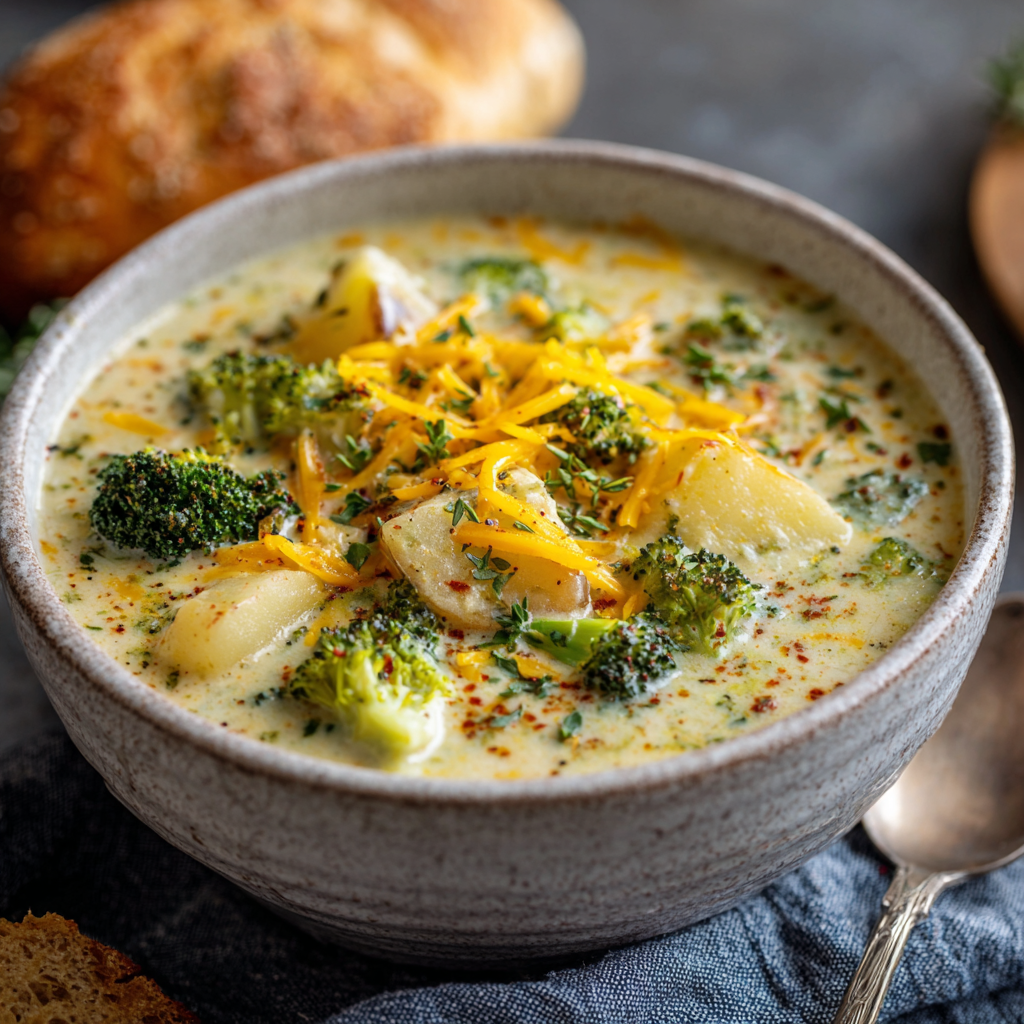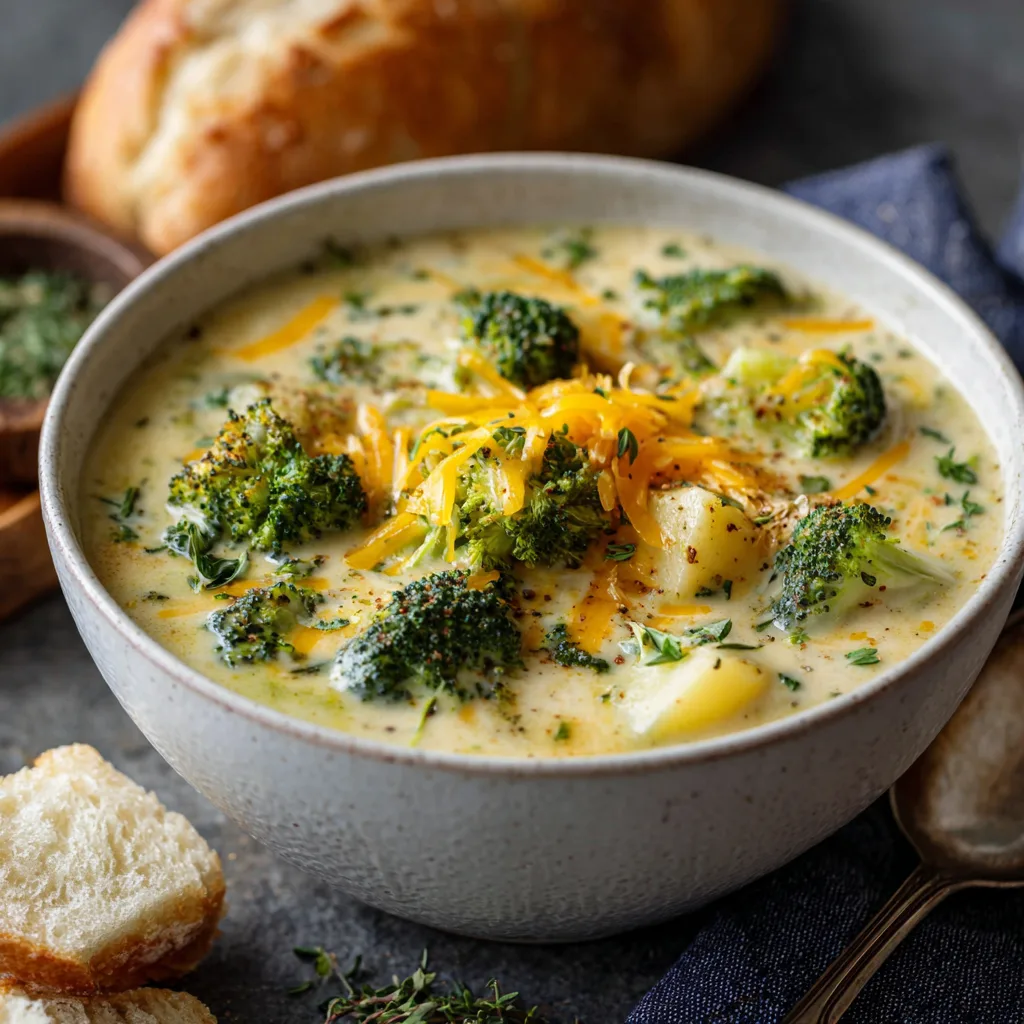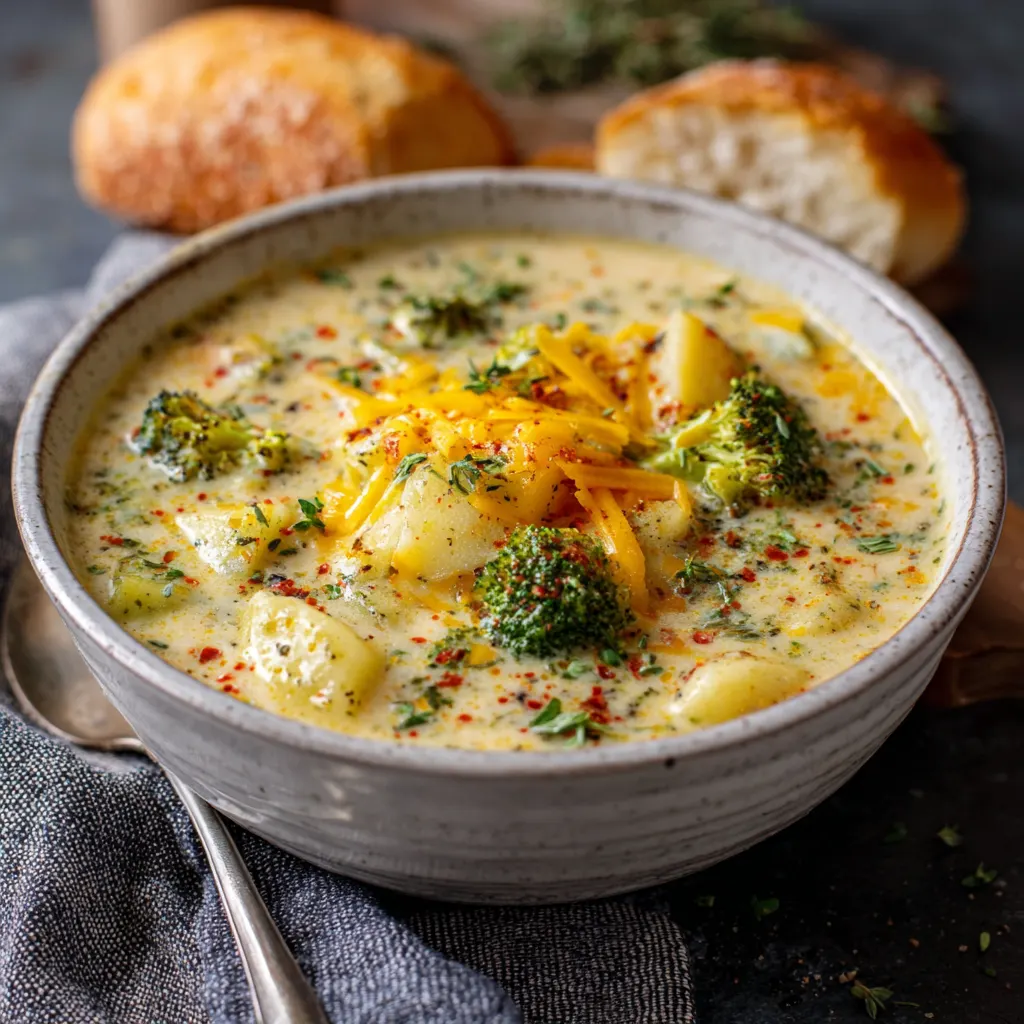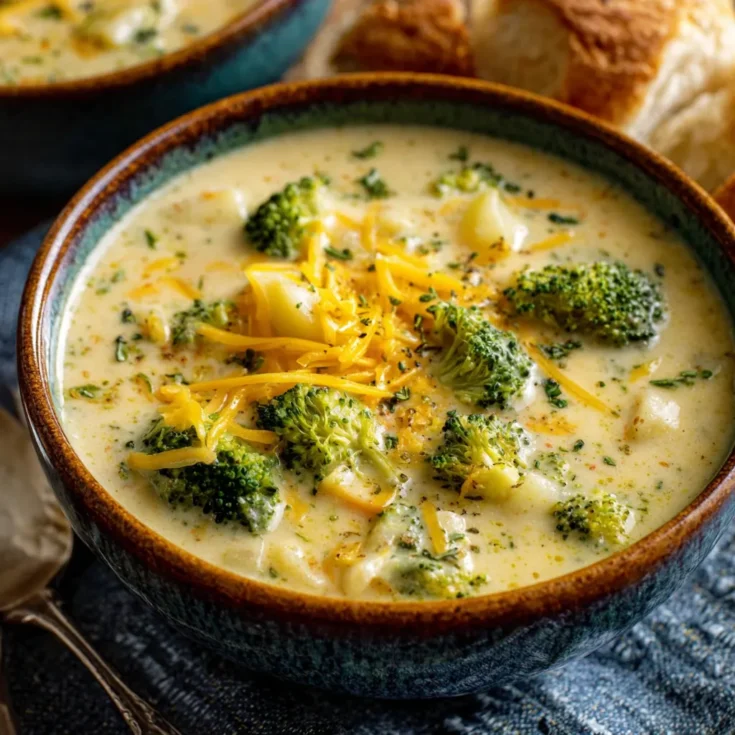Hearty Broccoli Chowder – A Comforting and Nutritious Soup for Every Season
Broccoli chowder stands out as a classic comfort food that warms both body and soul. This soup combines fresh broccoli, tender potatoes, and savory aromatics into a creamy, satisfying dish. Its rich texture and bold flavors make it a perfect meal for chilly days or anytime you crave something filling and nourishing.
What makes this chowder “hearty” is its balance of chunky vegetables and smooth creaminess. The potatoes add substance and thickness, while the broccoli delivers vibrant color and freshness. Together, these ingredients create a soup that feels substantial without being heavy. The addition of herbs and spices enhances its comforting taste, inviting you to savor every spoonful.
Broccoli chowder appeals because it delivers warmth and nourishment in one bowl. It fills you up and provides essential nutrients, making it a wholesome choice for lunch or dinner. The soup suits all seasons—refreshing enough for spring and robust enough for winter.
Broccoli serves as a nutritional powerhouse in this dish. It offers ample vitamins C and K, fiber, and antioxidants that support overall health. Potatoes contribute complex carbohydrates and potassium, adding energy and balance. The creamy base, often made with milk or cream, supplies calcium and protein. Additional ingredients like onions, garlic, and herbs boost flavor while offering their own health benefits.
This article will guide you through everything you need to know about hearty broccoli chowder. You’ll find a detailed recipe, tips to customize it to your liking, and answers to common questions. Whether you want a vegetarian version, want to adjust the thickness, or need storage advice, this comprehensive guide has you covered. Prepare to discover how easy it is to create a delicious, nutritious chowder that becomes a family favorite.
Essential Ingredients in Hearty Broccoli Chowder
Choosing the right ingredients shapes the flavor and texture of a truly hearty broccoli chowder. Let’s start with broccoli, the star of the dish. Fresh, bright green heads with tight florets work best. Both crown florets and tender stems add texture and taste. To prepare, wash thoroughly and chop into bite-sized pieces for even cooking.
Potatoes provide the creamy body that defines chowder. Yukon Gold or Russet potatoes stand out for their smooth, buttery texture when cooked. These varieties break down slightly during simmering, thickening the soup naturally while maintaining some chunkiness.
Onions and garlic create the aromatic foundation that awakens the palate. Sautéed onions soften and sweeten, while minced garlic adds depth. Together, they balance the freshness of broccoli and the richness of dairy.
The broth plays a key role in flavor and nutrition. Vegetable broth suits vegetarian versions, offering a light, savory base. Chicken broth adds a richer, more robust taste but can be substituted for those avoiding meat. Using homemade broth elevates flavor and controls sodium levels.
Dairy brings creaminess and richness. Heavy cream produces a luscious texture, while whole milk lightens the soup without sacrificing smoothness. Cheese, such as sharp cheddar or mild Parmesan, adds a pleasant tang and body. For dairy-free alternatives, consider coconut milk or cashew cream to maintain creaminess without lactose.
Optional proteins like crispy bacon or diced ham introduce smoky, savory notes. For vegetarian options, smoked paprika or mushrooms provide a satisfying umami flavor, complementing the vegetable base without overpowering it.
Herbs and spices round out the taste. Fresh or dried thyme and parsley bring brightness and herbal complexity. A pinch of black pepper sharpens flavors, while a dash of smoked paprika can add warmth. These seasonings transform simple ingredients into a flavorful, inviting chowder.
Nutritional Highlights of Broccoli Chowder
Broccoli chowder offers impressive nutritional value, making it both comforting and healthful. Broccoli delivers generous amounts of vitamin C, which supports the immune system, and vitamin K, essential for bone health. Folate, another key nutrient in broccoli, aids in cell growth and repair.
Fiber in broccoli and potatoes promotes digestive health and helps maintain stable blood sugar levels. Antioxidants in broccoli combat oxidative stress, contributing to overall wellness.
Protein and calcium come primarily from dairy or meat additions. Milk and cream supply these vital nutrients, supporting muscle function and bone strength. Adding cheese or lean proteins boosts protein content further.
For those watching calories, adjustments are simple. Use low-fat milk or plant-based alternatives and reduce or omit added proteins. Replacing potatoes with lower-carb vegetables like cauliflower creates a lighter, gluten-free chowder without sacrificing heartiness.
Overall, hearty broccoli chowder blends nutrition and flavor, offering a balanced meal that satisfies both the palate and the body.
Preparing Your Ingredients for the Best Chowder
Start by handling your broccoli with care. Rinse the florets and stems under cold water to remove dirt. Cut the broccoli into uniform, bite-sized pieces to ensure even cooking. Using both florets and tender stems adds texture and variety to your chowder.
Next, prepare the potatoes, which provide the soup’s creamy body. Peel them if you prefer a smoother texture. Cut potatoes into small cubes, about one-inch pieces, so they cook quickly and break down slightly, thickening the chowder naturally.
Sautéing aromatics sets the flavor base. Chop onions finely and mince garlic cloves. Heat oil or butter in your pot over medium heat, then add onions. Cook until they turn translucent and soft. Add garlic last and sauté briefly until fragrant, being careful not to burn it.
Cooking Process Explained
Step 1: Sauté Aromatics and Optional Proteins
Begin by browning any optional proteins such as diced bacon or ham in the pot. This step releases rich, smoky flavors. Remove the cooked meat and set aside, leaving the rendered fat in the pot. If you’re making a vegetarian chowder, skip this step and use oil or butter for sautéing aromatics.
Step 2: Adding Broth and Potatoes, Simmering Until Tender
Pour in your chosen broth and bring it to a gentle boil. Add the cubed potatoes and reduce heat to simmer. Let the potatoes cook until fork-tender, about 10 to 15 minutes. This slow simmer helps release starch, which naturally thickens the chowder.
Step 3: Incorporating Broccoli and Cooking to Perfect Tenderness
Add the chopped broccoli florets and stems to the pot. Continue simmering for another 5 to 7 minutes, just until the broccoli is tender but still retains some bite. Overcooked broccoli becomes mushy and loses vibrant color.
Step 4: Adding Dairy and Thickening Agents
Lower the heat before stirring in your dairy—cream, milk, or dairy-free alternatives. This prevents curdling. For extra thickness, you can mix a small amount of flour or cornstarch with cold water and stir it in gradually. Cook gently until the chowder reaches a creamy consistency.
Step 5: Seasoning and Finishing Touches
Return any cooked bacon or ham to the pot. Add fresh herbs, salt, and pepper. Taste and adjust seasoning. A squeeze of lemon juice or a splash of vinegar can brighten flavors and balance richness. Stir gently and avoid boiling once dairy is added.
Tips for Achieving the Perfect Chowder Texture and Flavor
Balance defines great chowder. You want enough creaminess to feel indulgent but enough chunky vegetables to enjoy texture. Puree a portion of the soup using an immersion blender for a smoother base while leaving some vegetables whole. This technique adds body without losing bite.
Adjust seasoning gradually. Add salt and pepper at the end to avoid over-seasoning early. Fresh herbs like thyme and parsley enhance flavor complexity. For acidity, a small dash of vinegar or lemon juice can lift the soup, making it more vibrant.
Avoid curdling dairy by adding it off the heat or on very low heat. Stir continuously and never let the soup boil after cream or milk is added. Overcooking broccoli causes it to turn mushy and dull in color, so keep cooking times brief once it goes in.
Following these steps and tips ensures a delicious, hearty broccoli chowder with perfect texture and rich flavor every time.





